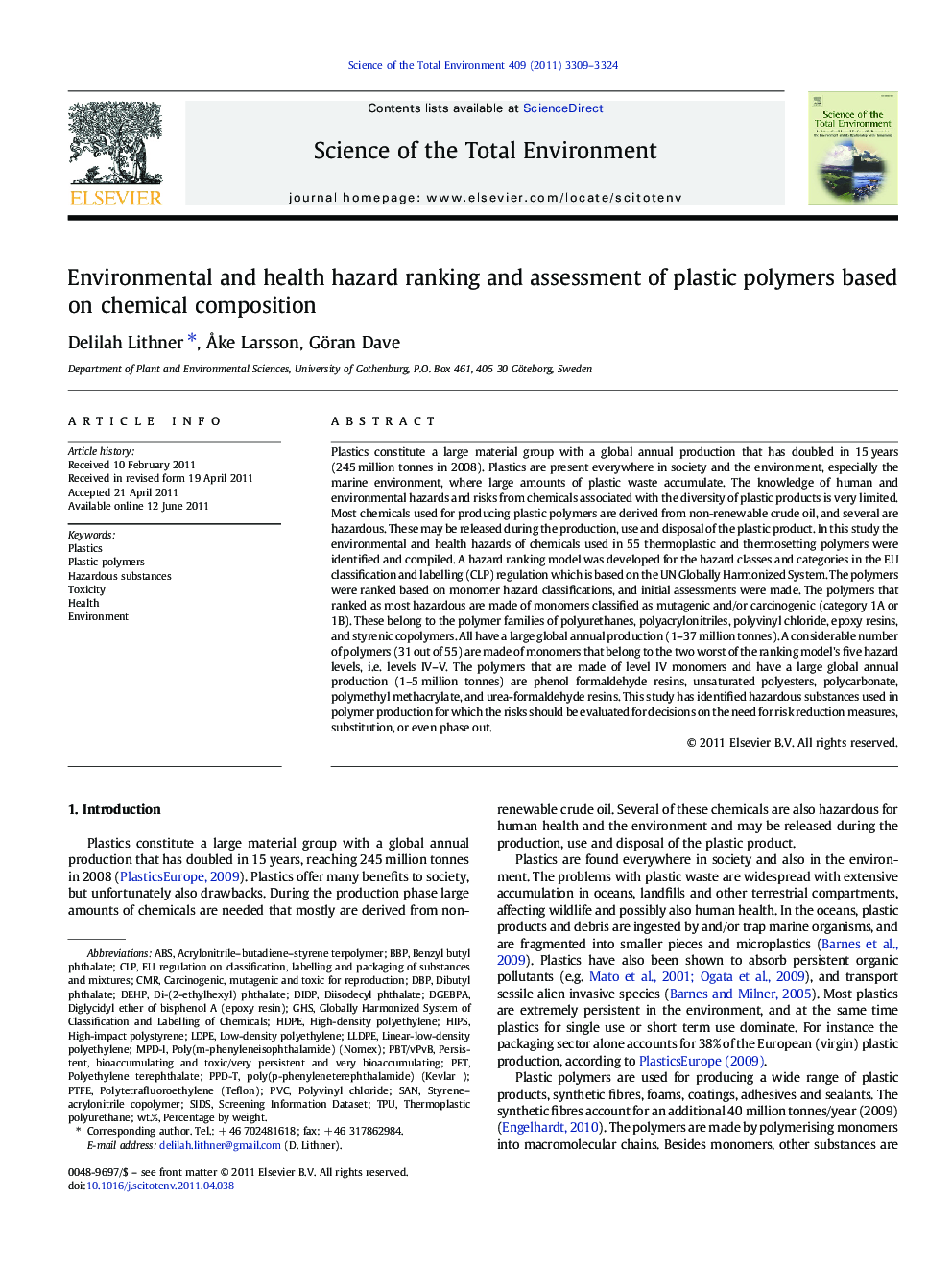| کد مقاله | کد نشریه | سال انتشار | مقاله انگلیسی | نسخه تمام متن |
|---|---|---|---|---|
| 6334735 | 1619844 | 2011 | 16 صفحه PDF | دانلود رایگان |

Plastics constitute a large material group with a global annual production that has doubled in 15Â years (245Â million tonnes in 2008). Plastics are present everywhere in society and the environment, especially the marine environment, where large amounts of plastic waste accumulate. The knowledge of human and environmental hazards and risks from chemicals associated with the diversity of plastic products is very limited. Most chemicals used for producing plastic polymers are derived from non-renewable crude oil, and several are hazardous. These may be released during the production, use and disposal of the plastic product. In this study the environmental and health hazards of chemicals used in 55 thermoplastic and thermosetting polymers were identified and compiled. A hazard ranking model was developed for the hazard classes and categories in the EU classification and labelling (CLP) regulation which is based on the UN Globally Harmonized System. The polymers were ranked based on monomer hazard classifications, and initial assessments were made. The polymers that ranked as most hazardous are made of monomers classified as mutagenic and/or carcinogenic (category 1A or 1B). These belong to the polymer families of polyurethanes, polyacrylonitriles, polyvinyl chloride, epoxy resins, and styrenic copolymers. All have a large global annual production (1-37Â million tonnes). A considerable number of polymers (31 out of 55) are made of monomers that belong to the two worst of the ranking model's five hazard levels, i.e. levels IV-V. The polymers that are made of level IV monomers and have a large global annual production (1-5Â million tonnes) are phenol formaldehyde resins, unsaturated polyesters, polycarbonate, polymethyl methacrylate, and urea-formaldehyde resins. This study has identified hazardous substances used in polymer production for which the risks should be evaluated for decisions on the need for risk reduction measures, substitution, or even phase out.
Research highlights⺠Environmental and health hazards of chemicals in polymer production were identified. ⺠A hazard ranking model for environmental and human health hazard classifications was developed. ⺠55 plastic polymers were ranked based on monomer classifications, and assessed. ⺠Polyurethanes, polyacrylonitrile, PVC, epoxy and styrenic copolymers ranked as most hazardous. ⺠These have a large market share and are made of mutagenic and/or carcinogenic monomers.
Journal: Science of The Total Environment - Volume 409, Issue 18, 15 August 2011, Pages 3309-3324